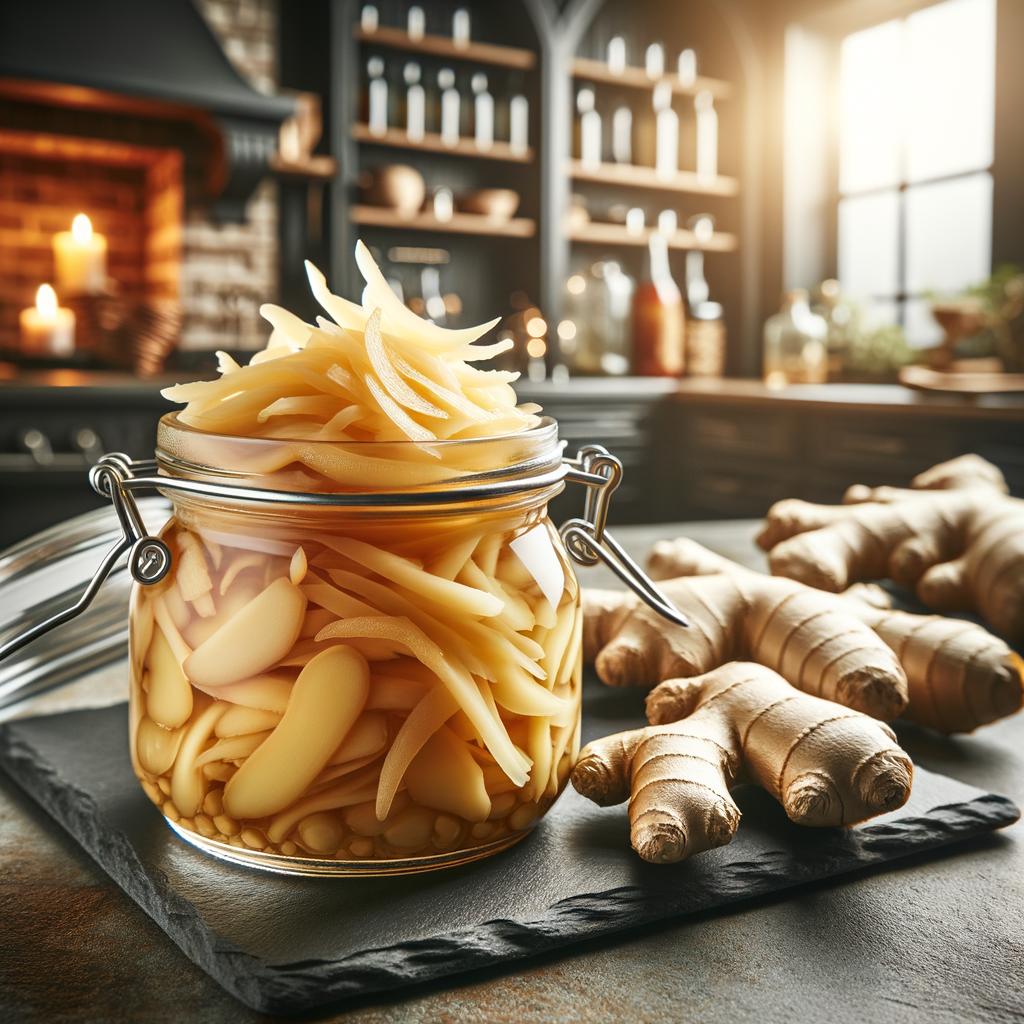Pickled Ginger

Description Pickled ginger, also known as "Gari" or "Sushi Ginger," is a delightful, tangy condiment that hails from the Land of the Rising Sun, Japan. Its appearance is distinctive, with thin, almost transparent slices that carry a pink to pale yellow hue, depending on the type of ginger used. The texture is crisp and slightly fibrous, providing a refreshing crunch with each bite. Its flavor profile is a captivating blend of sweet, sour, and slightly spicy notes. What sets pickled ginger apart from its fresh counterpart is the pickling process, which mellows the heat of fresh ginger and introduces a sweet-tart flavor that dances on the palate.
Primary Uses Pickled ginger is most commonly used as a palate cleanser in sushi meals, allowing the consumer to experience the full flavor of each different piece of sushi. It's also a key component in many Asian dishes, where it's used to add a pop of flavor and color. Outside of culinary uses, pickled ginger is believed to have medicinal properties, including aiding digestion and helping to prevent nausea and motion sickness. Its cultural significance is deeply rooted in Japanese cuisine, where it's not just a condiment but an essential part of the meal.
History The history of pickled ginger is as rich and vibrant as its flavor. It dates back to the ancient times in Japan, where it was consumed for its medicinal properties. Over time, it found its way into the world of sushi, where it became a beloved companion to the delicacy. The pink variety of pickled ginger, often found in sushi restaurants, gets its color from young ginger roots, which naturally turn pink when pickled. There's a charming folklore in Japan that eating pickled ginger brings good fortune, making it a staple in many Japanese celebrations and festivities.
Nutritional Information Pickled ginger is not just a flavor powerhouse but also a nutritional one. It's packed with antioxidants, which help to fight harmful free radicals in the body. It also contains a good amount of Vitamin C, potassium, and magnesium. The gingerol in ginger is known for its anti-inflammatory and antioxidant effects. Compared to fresh ginger, pickled ginger has a lower calorific value and a higher sodium content due to the pickling process. As with all foods, it's best to consume pickled ginger in moderation due to its high sodium content. But when consumed judiciously, it can be a delightful addition to a healthy diet.

